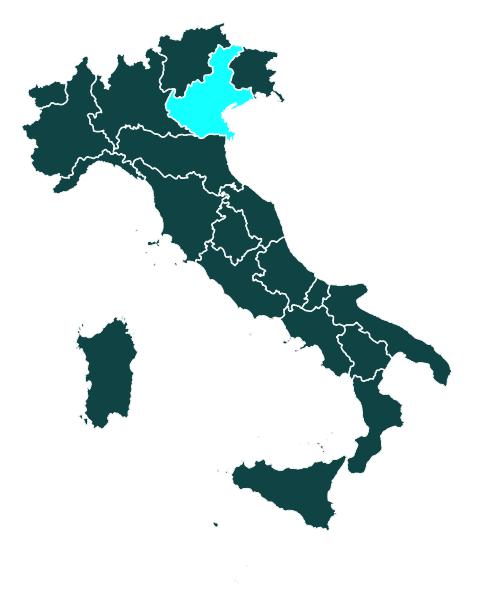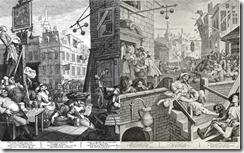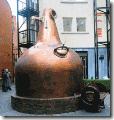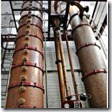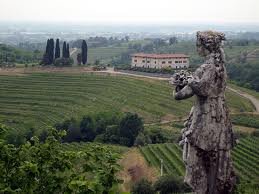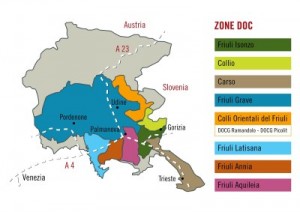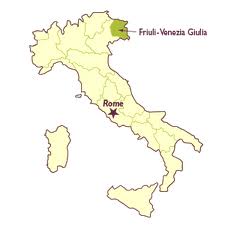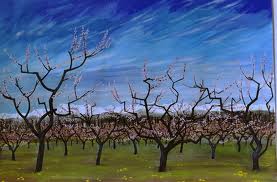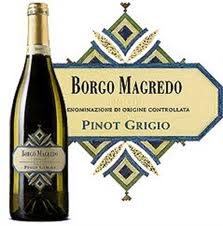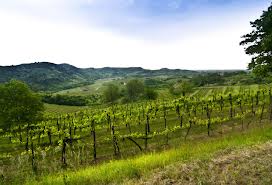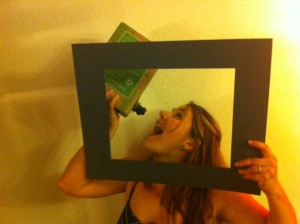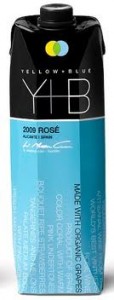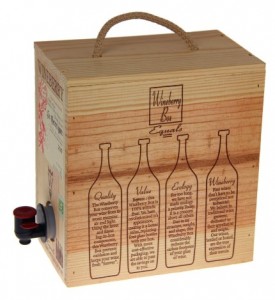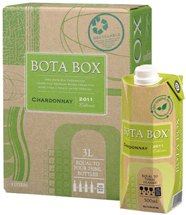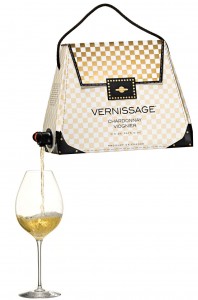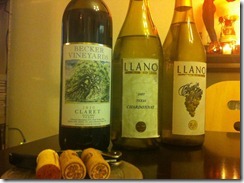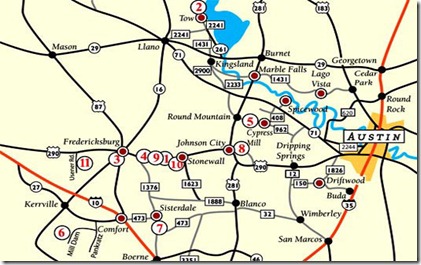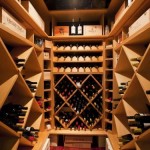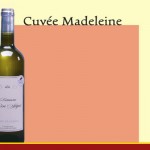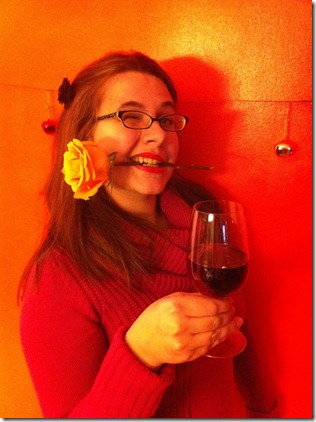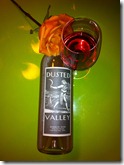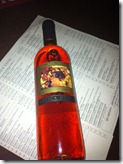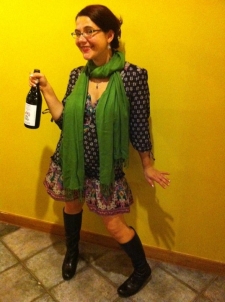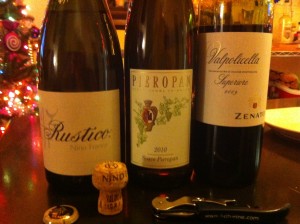 We have been exploring the Tre Venezie on Wine Soaked starting with Trentino- Alto Adige and Friuli-Venezia Guilia, and today we are going to explore the most well know of this trio of wine regions that surround the city of Venice, that is The Veneto. Some people love this region’s wine for its complexity and some people see it as one of Italy’s major bulk wine producers, and both of these sentiments are on the mark. We will see why as we explore the history, geography, grapes, wine-making techniques and wine regions of this very multi-faceted area.
We have been exploring the Tre Venezie on Wine Soaked starting with Trentino- Alto Adige and Friuli-Venezia Guilia, and today we are going to explore the most well know of this trio of wine regions that surround the city of Venice, that is The Veneto. Some people love this region’s wine for its complexity and some people see it as one of Italy’s major bulk wine producers, and both of these sentiments are on the mark. We will see why as we explore the history, geography, grapes, wine-making techniques and wine regions of this very multi-faceted area.
The History of Wine Production in The Veneto
The Veneto, and Venice for that matter, take their name from a tribe that settled in the area around 1000 BC. It was one of the leading trading ports and commercial empires in Medieval times, and it was the link between the Byzantine Empire and the Northern country of Europe. Wine was a major trading commodity, and this laid the groundwork for the Veneto to be a great wine growing region, with many influences of grape and vinicultural style from around the world.
leading trading ports and commercial empires in Medieval times, and it was the link between the Byzantine Empire and the Northern country of Europe. Wine was a major trading commodity, and this laid the groundwork for the Veneto to be a great wine growing region, with many influences of grape and vinicultural style from around the world.
It has had many high points and low points as far as quality goes through the ages, but one thing that has always been true of the Veneto is that it is capable of producing A LOT of wine. In fact, this was particularly exploited in the 1960s and 1970s when the main goal was to make as much “ok” wine as possible. This is the point when Valpolicella, Soave, and even Prosseco stopped being looked at as quality wines worth study and reverence, and instead became that passable wine on supermarket shelves for under ten dollars. That is not to say that there are not amazing producers of all of these wines, it is just to say that those producers are not the ones responsible for the Veneto producing the most wine in all of Northern Italy. One wine, however, that has always demanded respect from the region is Amarone, which we will talk about a bit later. There is has lately been a resurgence of lower yields and more quality as the demand for high-quality mid-priced wine has been rising on the international market.
The Geography of it All
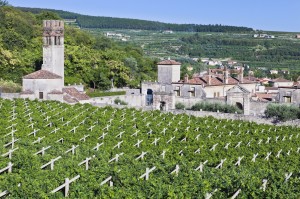 On the most basic level, The Veneto is in Northeastern Italy (The bottom of the ruffle on the garter). The vast fertile alluvial plains of the Veneto (capable of producing a sea of bulk wine) stretch from Venice and the Adriatic Coast to the foothills of the Alps, and the border of Trentino-Alto Adige. This is where the magic happens! In the foothills there is less fertile soil, which makes for much more complex wine.
On the most basic level, The Veneto is in Northeastern Italy (The bottom of the ruffle on the garter). The vast fertile alluvial plains of the Veneto (capable of producing a sea of bulk wine) stretch from Venice and the Adriatic Coast to the foothills of the Alps, and the border of Trentino-Alto Adige. This is where the magic happens! In the foothills there is less fertile soil, which makes for much more complex wine.
The best growing area is on the hills, on well-drained volcanic soil sprinkled with sand, clay, and gravel. The climate in the North and West can be quite cool and mountainous, where the further south and the closer to the Adriatic Sea you get it becomes warmer and more Maritime. There is also Lake Garda, and the Adige and Po rivers, that have a moderating effect on certain sub-zones.
The Grapes of Note
Whites:
- Garganega– Leading white grape. Probably of Greek origin, but it has been a key player in the Veneto since the Renaissance. It is the key grape in the Soave & Gambellara regions.
- Pinot Grigio– This is the key volume player. It is also used as a blending grape in Prosecco. It is light and easy-going, but its quality here pales in comparison to the neighboring regions of Friuli-Venezia Giulia & Trentino-Alto Adage.
- Trebbiano- Leading blending grape for Soave & Bianco di Custanza.
- Prosecco aka Glera- Most likely native to Friuli-Venezia Giulia, but it is now almost exclusively grown in the Veneto as the leading grape in Prosecco Spumante, and Frizzante.
- Tocai Friulano- Not as popular in the Veneto as in Friuli, but it is super unique and fun and does pop up in some high quality blends.
- Vespaiola- This native grape is the base for some interesting dry whites and more notably some sweet wines.
- Pinot Bianco- It is a minor grape as far as production goes, and is often used as a blending grape in Prosecco.
- Chardonnay- It can make some easy access New World-style wines, but mostly it just falls into that “make a fast buck” wine-lake of the Veneto.
Reds:
- Corvina- This is the superstar red grape of the region. It is the star player in the blends of Amerone, Valpolicella, & Bardolino.
- Rodinella- This is the second most important red grape. It is the supporting player in Amerone, Valpolicella, & Bardolino.
- Molinara- This is the third runner up as far as red grapes go in the Veneto. It also usually is blended into Amerone, Valpolicella, & Bardolino.
- Negrara- This is a background or accent grape that is only sometimes blended in Amerone, Valpolicella, & Bardolino.
- Raboso- An indigenous red grape that makes easy fruit-forward reds in the regions of Raboso del Piave & Raboso Veronese.
- Wildbacher- This is a black grape mostly used as a blending grape. Also found in Western Styria in Austria.
- Merlot- Mostly it just falls in to that “make a fast buck” wine-lake of the Veneto, although it can also be used in a few interesting blends.
- Cabernet Sauvignon- Always falls into the “make a fast buck” wine-lake… and is usually thin and unremarkable.
- Cabernet Franc- Mostly DOC wine worth searching out, often barrique-aged.
Most Famous Wine Styles & Wine Making Techniques:
- Amarone- The name means “The bigger better one”. It is made in the Valpolicella region of the Veneto. It is even the
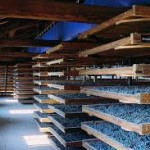 same blend as Valpolicella — mostly Corvina with a backup blend of Rodinella, Molinara & Negrara. The major difference is that these grapes are left on the vine for a longer period of time to achieve extra ripeness. Next, whole bunches are harvested, and left to dry on bamboo shelving or mats in cool drying lofts for two to three months. This causes the grapes to shrivel, further concentrating their flavor and sugars. When the grapes are finally crushed and pressed it produces an intense full bodied wine that is usually 15-16% in Alcohol.
same blend as Valpolicella — mostly Corvina with a backup blend of Rodinella, Molinara & Negrara. The major difference is that these grapes are left on the vine for a longer period of time to achieve extra ripeness. Next, whole bunches are harvested, and left to dry on bamboo shelving or mats in cool drying lofts for two to three months. This causes the grapes to shrivel, further concentrating their flavor and sugars. When the grapes are finally crushed and pressed it produces an intense full bodied wine that is usually 15-16% in Alcohol. - Prosecco- This is a Spumante wine (Sparkling Wine) made primarily from the Prosecco grape. Instead of employing the Traditional Method, this sparkler is made in the Charmat Method, which means that the second fermentation occurs in pressurized tanks, instead of in individual bottles. In Venice it is considered an ombrette, or pick-me-up!
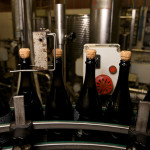
- Soave-Traditionally this white is a blend of Garganega & Trebbiano. It is best described as light, fresh, and smooth. Due to the cash-grab wine industry expansion in this region in the 1970s, you are often better off seeking out Soave Classico (which comes from the original foothills of the region), or better yet Soave Classico Superiore, which must be aged for Eight months before release. There is also a tiny amount made in the recioto method — this is the the drying method also employed in Amarone & recioto della Valpolicella. However, here the fermentation is halted before all of the sugar is converted to alcohol, leaving stunningly complex, sweet white wine.
- Valpolicella – Like Amerone, Valpolicella is made from Corvina blended with Rondnella, Molinara, and a few other
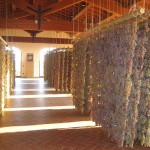 permitted surprises. After that, the similarity splits off. Valpolicella is now split into five distinct styles.
permitted surprises. After that, the similarity splits off. Valpolicella is now split into five distinct styles.
- Basic– Lightweight grapey wine which is not usually aged and can come from anywhere in the Valpolicella region. (This is a product of that aforementioned 1970s greed rush.) I will not say that all of these are bad, but they’re not likely to be life-changing wines.
- Valpolicella Classico- This refers to wines that come from the original Valpolicella zone pre-70s greed.
- Valpolicella Superiore- This wine comes from the Classico zone and must be aged a year.
- Valpolicella Ripasso- This is made by taking newly fermented Valpolicella and adding Amarone pomace (That is what is left post the pressing of Amarone grapes). The pomace is left in for a few weeks so that the Valpolicella may extract all of the extra color, tannin, flavor & structure.
- recioto della Valpolicella- Like Amarone this wine is made from the ripest grapes possible, that are put into special drying rooms allowing the grapes to raisinate, to concentrate their sugar. The difference between Amarone and this wine is that fermentation is halted to preserve some sugar, like that of its Soave sister.
DOCG’s and all that Jazz!
There are 14 distinct DOCG’s in the Veneto that are worth remembering and tons more DOC’s if you have the time. Today I will delve into the wine laws of these 14 DOCG’s:
List Of DOCG’s:
- Amarone della Valpolicella DOCG
- Bardolino Superiore DOCG
- Colli Aspolani (Asolo Prosecco) DOCG
- Colli di Conegliano DOCG
- Colli Euganei Fior d’Arancio DOCG
- Conegliano Valdobbiadene Prosecco DOCG
- Friularo di Bagnoli (Bagnoli Friularo) DOCG
- Lison DOCG
- Montello Rosso/Montello DOCG
- Piave Malanotte/ Malanotte del Piave DOCG
- Recioto di Gambellara DOCG
- Recioto di Soave DOCG
- Recioto della Valpolicella DOCG
- Soave Superiore DOCG
Amarone della Valpolicella DOCG (Est 2010)
- Region– Veneto
- Province-Verona
- Number of Communes– 19
- Four Levels of Note- Amarone della Valpolicella, Amarone della Valpolicella Classico, Amarone della Valpolicella Valpantena, & Amarone della Valpolicella Riserva
- Grapes- 45- 95% Corvina, 5-30% Rodinella and a max of 25% “other” red grapes, with no single other grape comprising more than 10%
- Min Alch- 14%
- Max Residual Sugar- 12 g/l
- Aging requirements- Amarone della Valpolicella- Min of 2 years from the 1st January of the year following harvest. Riserva- Min of 4 years from the 1st November fallowing harvest.
- Other Restrictions- Grapes may not be vinified before December 1st of the harvest year. No more then 65% of a producers total maximum yield may be used to make Amarone.
- Min Planting Density- 3,300 vines per hectare (2.47 Acres)
- Max Yeilds- 12 tons per hectare
Bardolino Superiore DOCG (Est 2011)
- Region- Veneto
- Province- Verona
- Number of Communes- 15
- Levels of Bardolino Superiore- Bardolino Superiore, & Bardolino Superiore Classico
- Grapes- 35-65% Corvina Veronese, 10-40% Rodinella & Max 20% “other” red grapes, with no single other grape comprising more than 10%
- Min Alch- 12%
- Max Residual Sugar- 6 g/l
- Aging Requirements- Min one year from November 1st of the harvest year.
- Min Planting Density- 3,300 vines per hectare (2.47 Acres)
- Max Yields- 9 tons per hectare
Colli Asolani (Asolo Prosecco) DOCG (Est 2009)
- Region- Veneto
- Province- Treviso
- Number of Communes- 17
- Types of Colli Asolani DOCG- Colli Asolani (Tranquillo), Frizzante, Spumante, & Spumante Superiore
- Grapes- Min 85% Prosecco (Glera), Max 15% blend of Verdiso, Bianchetta Trevigiana, Perera, & Glera Lunga, Max 15% Pinot Nero, Pinot Bianco, Pinot Grigio, & Chardonnay
- Min Alch- Basic: 10.5%, Spumante Superiore: 11%
- Sweetness Levels- Frizzante- Secco to Amabile, & Spumante Superiore: Extra Brut to Dolce
- Other Restrictions- Frizzante wines may undergo a second fermentation in the bottle, and when done they must be labeled, “rifermentazione in bottiglia”
- Min Planting Density- 3,000 vines per hectare (2.47 Acres)
- Max Yields- 12 tons per hectare
Colli di Conegliano DOGC (Est 2011)
- Region- Veneto
- Province- Treviso
- Number of Communes- 20
- Types of Colli di Conegliano DOGC- Bianco, Rosso, Rosso Riserva, Refrontolo (Roso), Refrontolo Passito (Rosso), & Torchiato di Fregona (Bianco Passito)
- Grapes-
- Bianco- Min 30% Manzoni Bianco & Min Combined 30% Chardonnay & Pinot Bianco, Max 10% combined Sauvignon & Riesling
- Rosso- Min 10% Cabernet Sauvignon Min 10% Cab Franc, Min 10% Marzemino, 10-40% Merlot & Max combined 20% Incrocio Manzoni & Refosc
- Min Alch- Bianco: 12%, Rosso: 12.5%, & Rosso Riserva 13%
- Aging Requierments-
- Bianco: Min 4 months from November 1st of the harvest year
- Rosso: Min 24 months from November 1st of the harvest year, including at least 12 months in oak
- Rosso Riserva: Min 36 months from November 1st of the harvest year, including at least 12 months in oak
- Min Planting Density- 3,000 vines per hectare (2.47 Acres)
- Max Yields- None
Colli Euganei Fior d’Arancio DOCG (Est 2010)
- Region- Veneto
- Province- Padua
- Number of Communes:17
- Types of Colli Euganei Fior d’Arancio DOCG- Colli Euganei Fior d’Arancio Tranquillo (Secco, or Dolce), Colli Euganei Fior d’Arancio Spumante, & Colli Euganei Fior d’Arancio Passito
- Grapes- Min 95% Moscato Giallo, Max 5% other aromatic veriatels
- Min Alch- Tranquillo: 10.5% (4.5% for Dolce), Spumante 10.5%, Passito: 15.5%
- Min Residual Sugar- Dolce: 50 g/l, Spumante: 50 g/l, & Passito 50 g/l
- Aging Requirements- Passito Min one year from November 1st of the harvest year
- Min Planting Density- 4,000 vines per hectare (2.47 Acres)
- Max Yields- 12 tons per hectare
Conegliano Valdobbiadene Prosecco DOCG (Est 2009)
- Region- Veneto
- Province- Treviso
- Number of Communes- 15
- Subzone- Cartizze
- Types of Conegliano Valdobbiadene Prosecco DOCG- Prosecco (Tranquillo), Frizzante, Spumante Superiore, Spumante Superiore w/ notation of “Rive” vineyard, & Spumante Superiore di Cartizze
- Grapes- Min 85% Prosseco (Glera), Max combined 15% Verdiso, Bianchetta Trevigiana, Perera, & Glera Lunga, & Max combined 15% Pinot Nero, Pinot Bianco, Chardonnay, Pinot Grigio ( Spumante wines only)
- Min Alch-Basic- 10.5%, Spumante Superiore 11%, Spumante di Cartizze 11.5%
- Sweetness Levels- Frizzante: Secco to Amabile, & Spumante Superiore: Brut-Dolce
- Aging Requirements- None
- Other Requirements-
- Wines labeled “Rive” must be handharvested, indicate a vintage & list one of the 43 vineyards from this hillside on the label.
- Frizzante wines may undergo a second fermentation in the bottle, and when done they must be labeled, “rifermentazione in bottiglia”
- Min Planting Density- 2,500 vines per hectare (2.47 Acres)
- Max Yields- 12-13 tons per hectare
Friularo di Bagnoli (Bagnolu Friularo) DOCG (Est. 2011)
- Region- Veneto
- Province- Padova
- Number of Communes- 13 & Classico Zone: 1
- Types of Friularo di Bagnoli DOCG- Basic, Riserva, Vendemmia Tardiva (Dry), Passito, & Classico (Can also be Riserva, Vendemmia Tardiva, or Passito)
- Grapes- Min 90% Raboso Piave, Max 10% any other red grapes of the region.
- Min Alch-Basic & VT- 11.5%, Riserva 12.5%, Passito 15.5%
- Ageing Requirements-
- Basic: Min 12 months from Novermber 1st of the harvest year
- Riserva: Min 24 months from November 1st of the harvest year including at least 12 months in oak
- Passito: Min 24 months in oak from November 1st of the harvest year
- Other Requirements-
- Passito: Grapes must be dried until at least December 8th following the harvest
- VT: At least 60% must be harvested & vinified after November 11th
- Min Planting Density- 2,500 vines per hectare (2.47 Acres)
- Max Yields: 11-12 tons per hectare
Lison DOCG (Est 2010)
- Region- Veneto & Friluli
- Province- Venice, Treviso (Veneto), & Pordenone (Friuli)
- Number of Communes-19
- Types of Lison DOCG-
- Lison
- Lison Classico
- Grapes- Min 85% Tai (Friulano), & Max 15% non-aromatic whites of the region
- Min Alch-Basic 12%, Classico 12.5%
- Aging Requirements- Wines may not be released before March 1st of the year following harvest.
- Min Planting Density- 3,000 vines per hectare (2.47 Acres)
- Max Yields- 10-11 tons per hectare
Montello Rosso/ Montello DOCG (Est 2011)
- Region- Veneto
- Province- Treviso
- Number of Communes- 18
- Types of Montello Rosso DOCG- Rosso, & Rosso Superiore
- Grapes- 40-70% Cabernet Sauvignon, 30-60% combined Merlot, Cabernet Franc, & Carmenere, Max 15% any other red grapes of the region
- Min Alch-Basic 12.5%, Classico 13%
- Aging Requirements-
- Basic: Min 18 months from November 1st of the harvest year, including 9 months in oak, & 6 months in bottle
- Superiore: Min 24 months from November 1st of the harvest year, including at least 12 months in oak, & 6 months in bottle
- Min Planting Density- 3,500 vines per hectare (2.47 Acres)
- Max Yields- 10 tons per hectare
Piave Malanotte/ Malanotte del Piave DOCG (Est 2010)
- Region- Veneto
- Province- Verona/ Treviso
- Type of Piave Malanotte DOCG- Rosso
- Grapes- Min 70% Raboso Piave, Max 30% Raboso Veronese, Max 5% other grapes from these regions (15-30% of the grapes must be dried until at least December 8th of the harvest year)
- Min Alch-12.5%
- Max Residual Sugar- 8 g/l
- Aging Requirements- Min 3 years from November 1st of the harvest year, including at least 12 months in oak & 4 months in bottle.
- Min Planting Density-
- Bellussi (“Raggi”) Training 1.250 vines per hectare
- Other methods 2500 vines per hectar
- Max Yields- 12 tons per hectare
Recioto di Gambellara DOCG (Est 2008)
- Region-Veneto
- Province- Vicenza
- Number of Communes- 4
- Types of Recioto di Gambellara DOCG- Classico, & Classico Spumante
- Grapes-100% Garganega
- Min Alch-Classico 11.5% & Spumante 11%
- Aging Requirements- May not be released until September 1st of the year following harvest
- Min Planting Density- 3,300 vines per hectare
- Max Yields- 6.25 tons per hectare
Recioto di Soave DOCG (Est 1998)
- Region-Veneto
- Province- Verona
- Number of Communes- Basic: 12, & Classico: 3
- Types of Recioto di Soave DOCG- Basic, Classico, & Spumante
- Grapes- Min 70% Garganega, Max combined 30% Trebbiano di Soave, Chardonnay & Pinot Bianco
- Min Alch-16%
- Min Residual Sugar- 70 g/l
- Aging Requirements- May not be released until September 1st of the year following harvest
- Min Planting Density- 3,300 vines per hectare
- Max Yields- 9 tons per hectare
Recioto della Valpolicella DOCG (Est 2010)
- Region-Veneto
- Province- Verona
- Number of Communes- Basic: 19, & Classico: 5
- Types of della Valpolicella DOCG- Basic, Classico, Spumante, Valpantena, & Valpantena Spumante
- Grapes- Min 45-95% Corvina, 5-30% Rondinella, Max 25% other red grapes of the region (10% of which have to be native)
- Min Alch-14%
- Aging Requirements- Grapes may not be vinified before December 1st of the harvest year
- Min Planting Density- 3,300 vines per hectare
- Max Yields- 12 tons per hectare
Soave Superiore DOCG (Est 2002)
- Region-Veneto
- Province- Verona
- Number of Communes- Basic:12, & Classico: 2
- Types of Soave Superiore DOCG- Basic, Superiore, & Superiore Riserva
- Grapes- Min 70% Garganega, Max 30% combined Trebbiano di Soave, Chardonnay & Pinot Bianco
- Min Alch-Superiore: 12%, & Riserva: 12.5%
- Max Residual Sugar- 6 g/l
- Aging Requirements-
- Superiore: May not be released until September 1st the year after harvest, including 3 months bottle aging
- Riserva: Min 2 years from November 1st of the harvest year, inclusing at least 3 months of bottle aging
- Min Planting Density-4,000 vines per hectare
- Max Yields- 10 tons per hectare
I hope this was a great starting point into your study of the Veneto!
Check out my Veneto Show, where I taste through 3 classic wines from the region http://winesoaked.com/2013/the-veneto-wine-show-2013/
As always I welcome thoughts and comments, and feel free to share any additional info you may have on this region.
Cheers until next time, when we will explore Asti!

